If you've got a bike, you need a lock. Whether you are just wanting to deter…
The bottom line is, the Scott Genius ST hidden shock isn’t just for aesthetics. It enables an amazing rear suspension design that doesn’t prevent decent dropper post insertion. And in my opinion the Scott Genius has the single best geometry of any mainstream trail bike out there, price tag or no price tag.
- Brand: Scott
- Product: Genius ST 900
- Price: £10,999
- From: Scott Sports
- Review by: Benji for 3 months
Please don’t get the wrong idea. There is no argument whatsoever for buying this £11k(!) version of the Scott Genius. That was just the test bike that we got sent. Sorry! Hey, I almost didn’t want this egregiously expensive bike to be good. But it was. Holy smokes it was good. The thing is, I wouldn’t get this one. I’d get the aluminium Genius ST 920 for £5k.
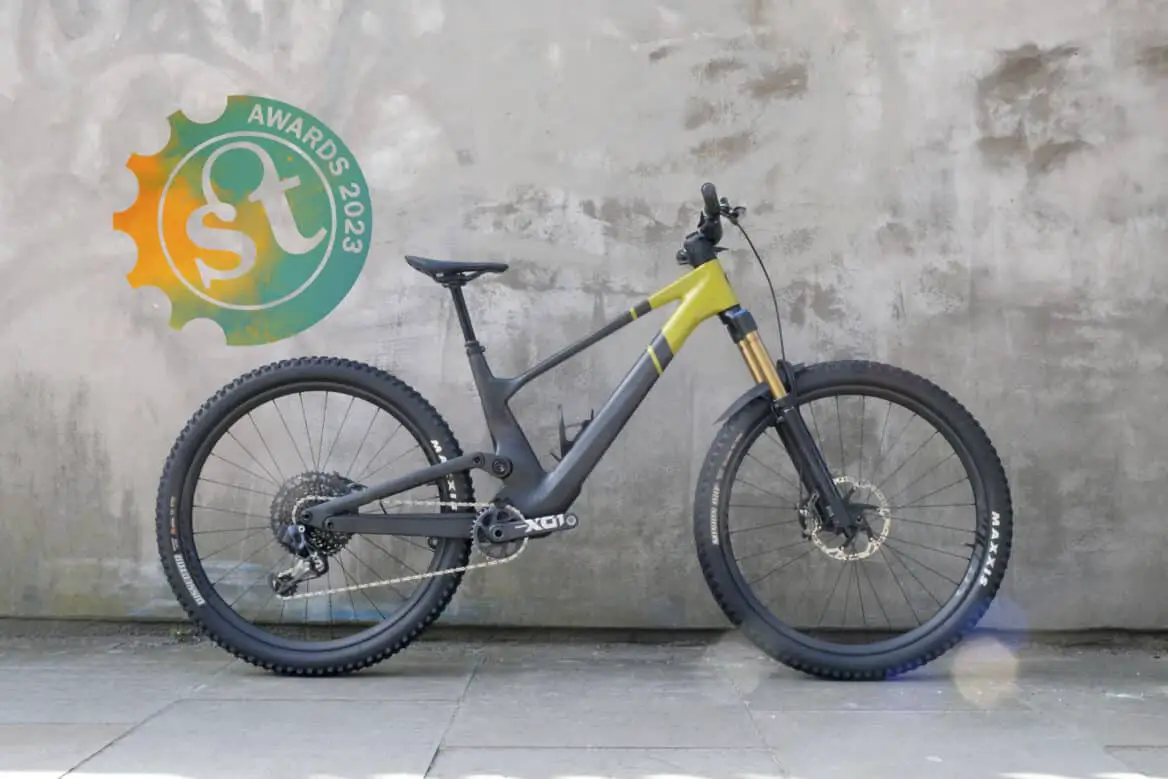
Here’s our full review from July…
This Scott Genius ST 900 Tuned is the most Scott-ish Scott we’ve seen for quite some time. A race bike for those who like to not-race. All will be explained.
Pros
- Good all-rounder geometry
- Excellent rear suspension
- Mega stiff (if you like that sort of thing)
Cons
- Restrictive cockpit combo
- TracLoc is redundant on such a sorted suspension layout
- Mega stiff (if you don’t like that sort of thing)
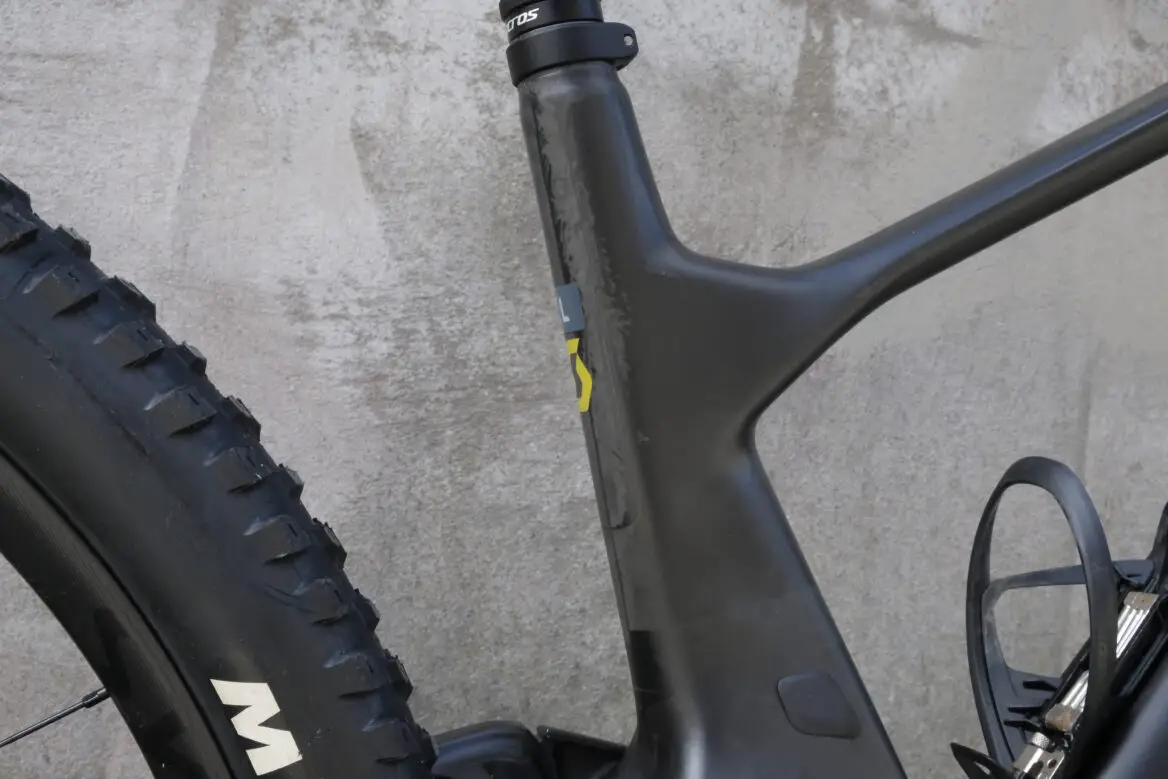
The latest Genius is the sixth incarnation and the first revision of the platform for five years. This is the ST version of the Genius. ST stands for Super Trail by the way, not Short Travel (which is sometimes what ST means on other brands’ bikes, nor Single Track).
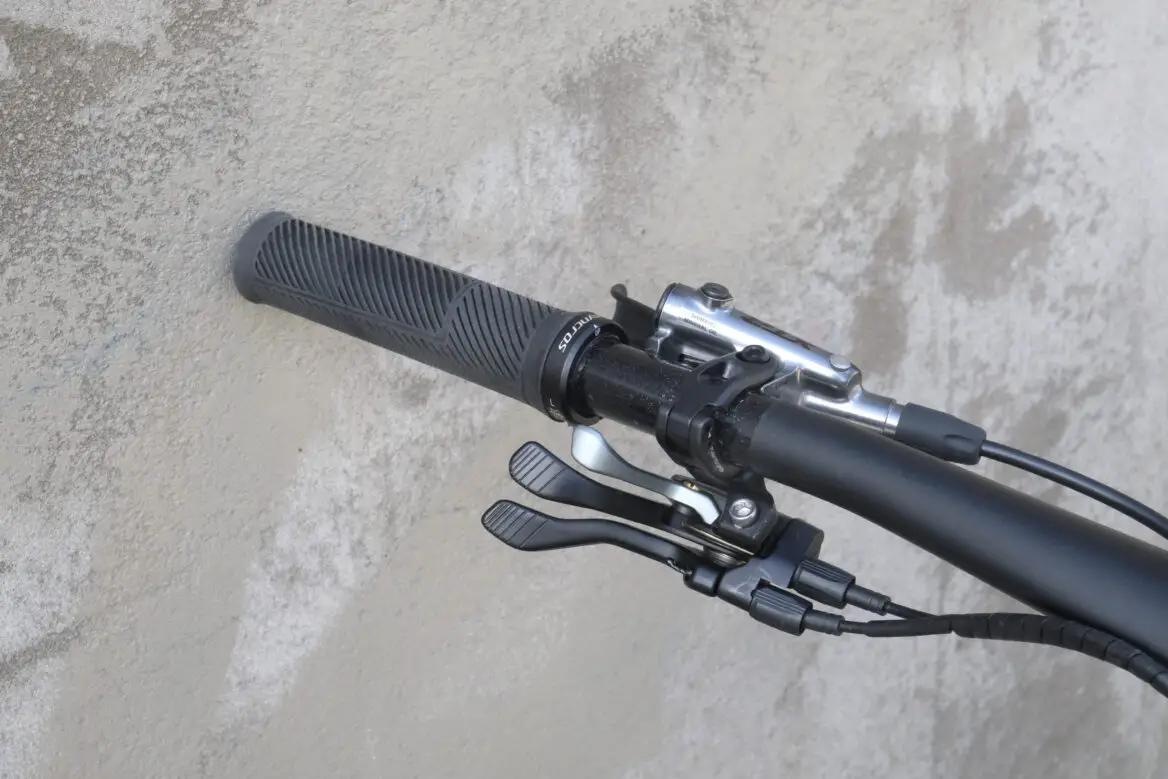
If it helps you understand this bike, think of the Genius ST as Scott’s version of a Specialized Stumpjumper Evo. That’s a comparison that helped me anyway! The Genius ST is the radder Genius. It comes with adjustable headset cups and everything. The ST ships in the slackest headset cup (and will most likely never be adjusted from that). The build kit of the Genius ST bikes is a bit more gravity-centric too: piggyback shocks, bigger brakes etc.
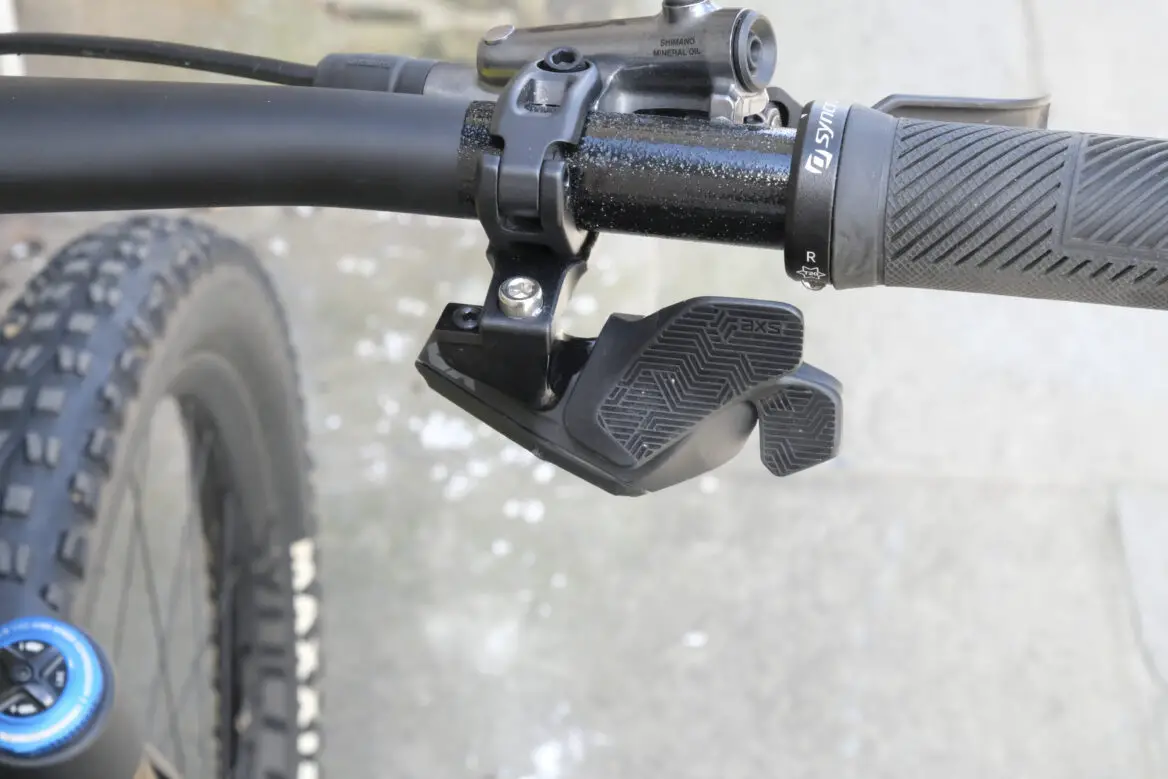
As regards the whys and wherefores of the ‘900’ and the ‘Tuned’ suffixes; they both essentially mean This Is The Top Carbon Model. And yeah. £10,999. Bananas.
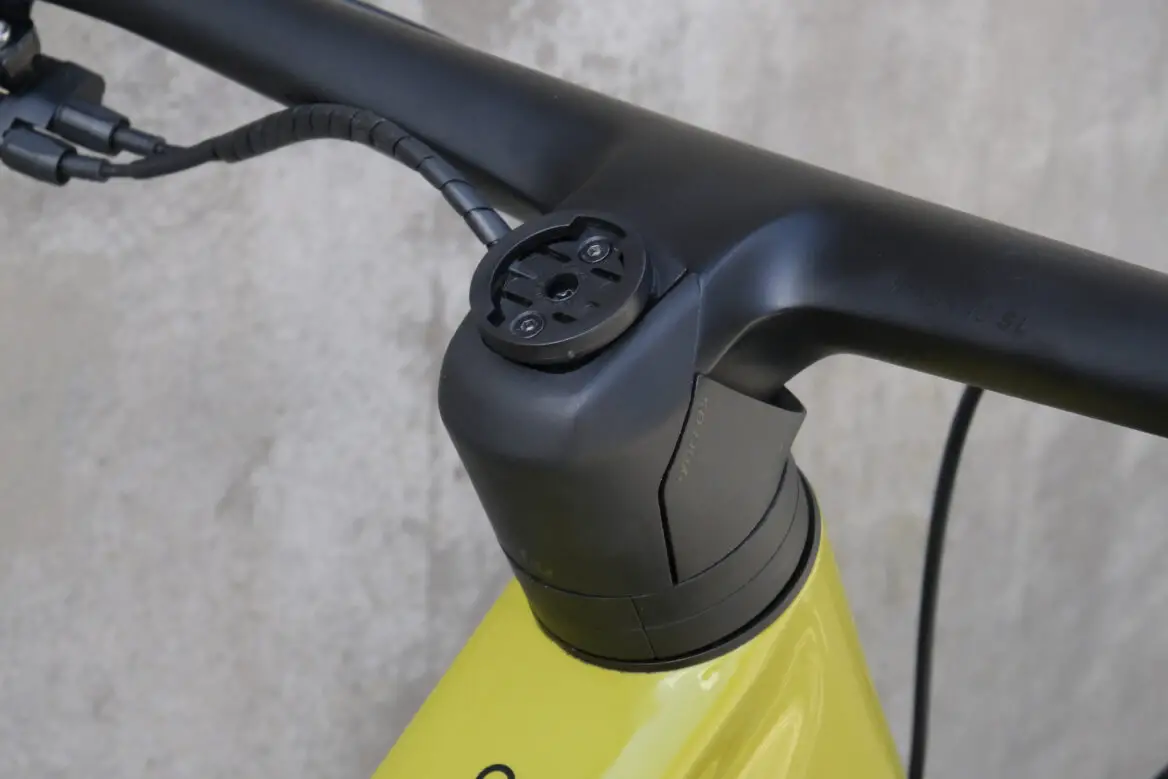
There is an all-alloy Scott Genius ST 920 for £4,999, which I would absolutely bear in mind whilst you read the rest of this review.
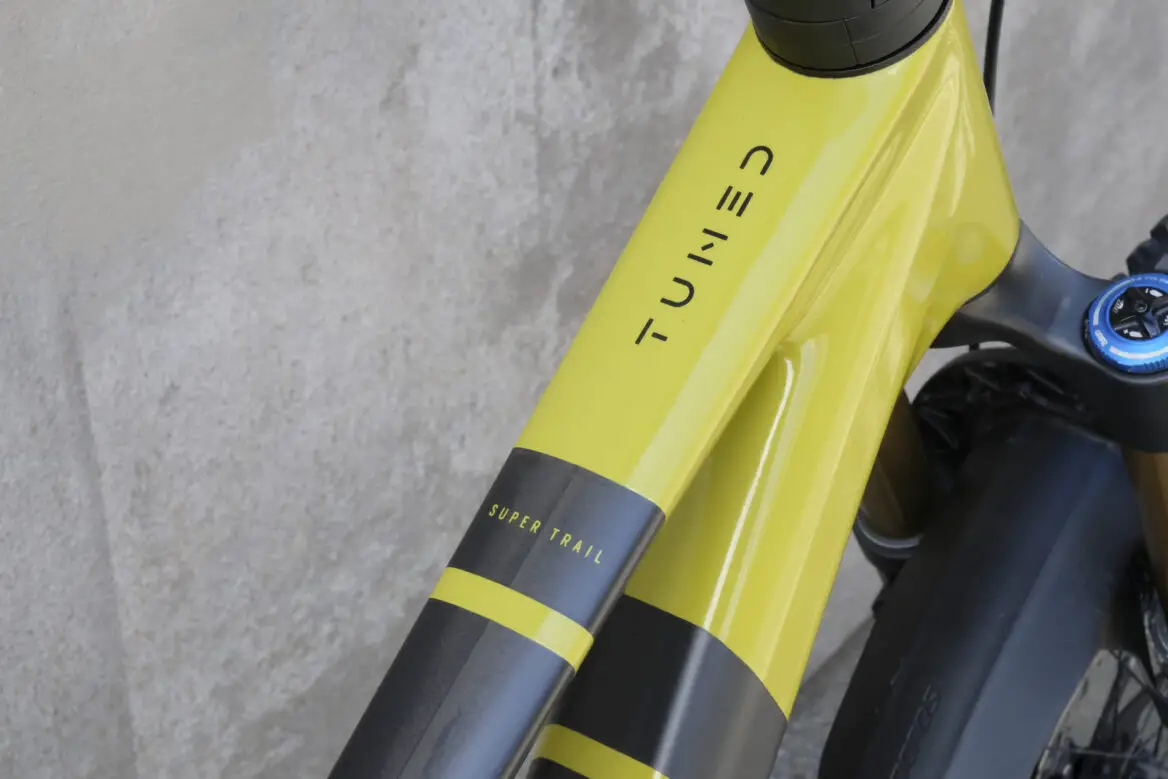
The vital stats of the Scott Genius ST are that it’s a 150mm travel 29er with a 160mm fork. The geometry is pretty much as progressive as it gets (details later). And there’s loads of proprietary and/or integrated and/or internal stuff on it.
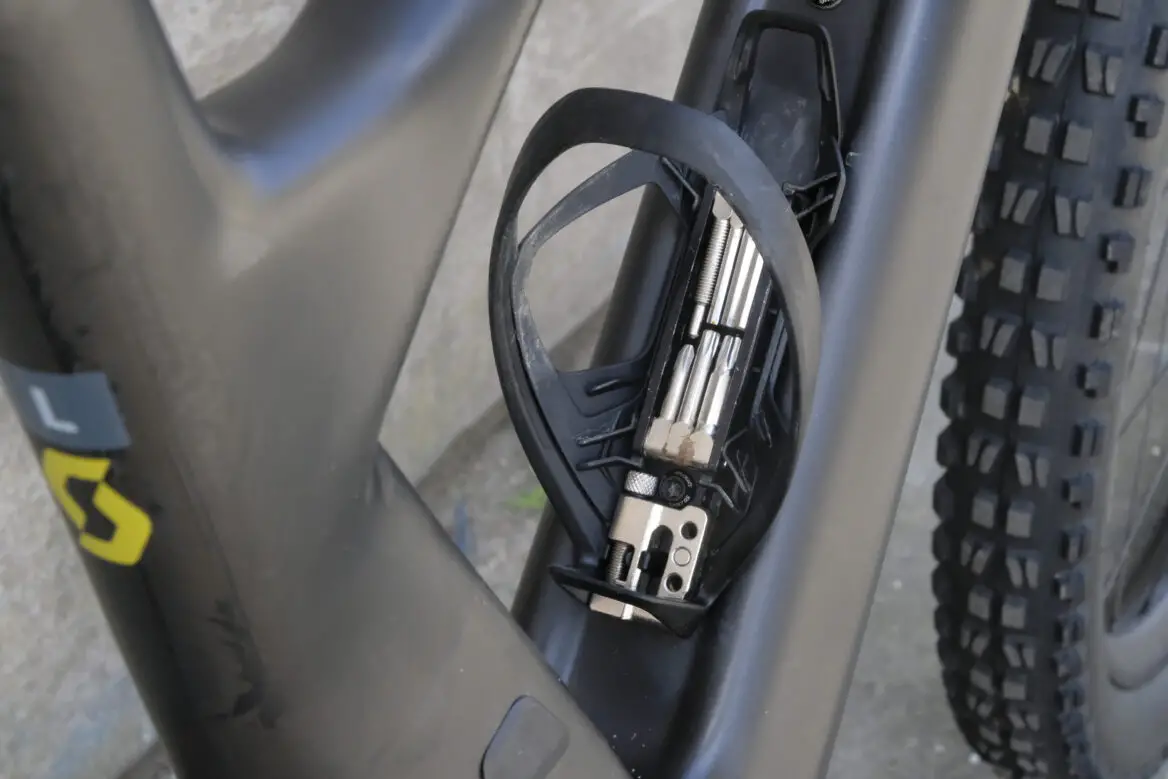
The thing you can’t see
The most eye-catching internal thing being the rear shock. Scott purchased Bold Cycles a few years ago and have used their hidden-shock layout on various bikes since. Most notably the Spark. And now it’s on the Genius and Genius ST range.
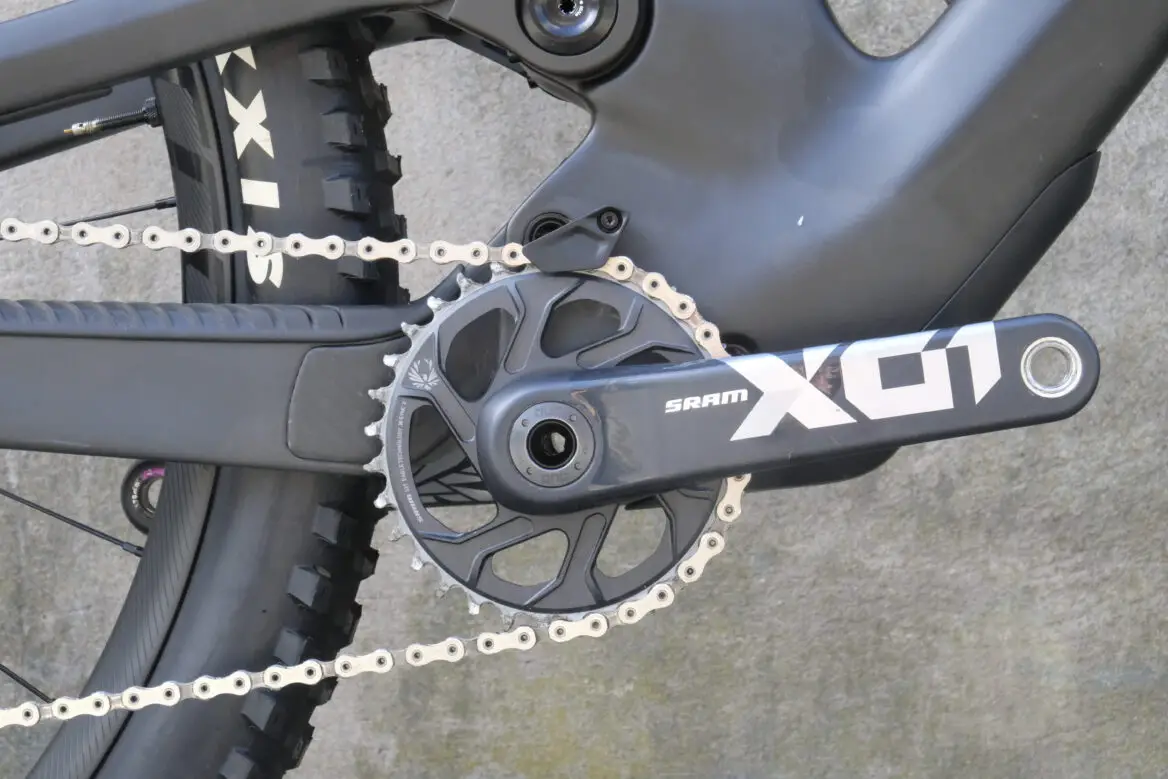
Is there any actual point to having a hidden shock aside from aesthetics? Even if the answer was “no”, I’d not have a problem with it. Aesthetics and uniqueness are nice things in their own right.
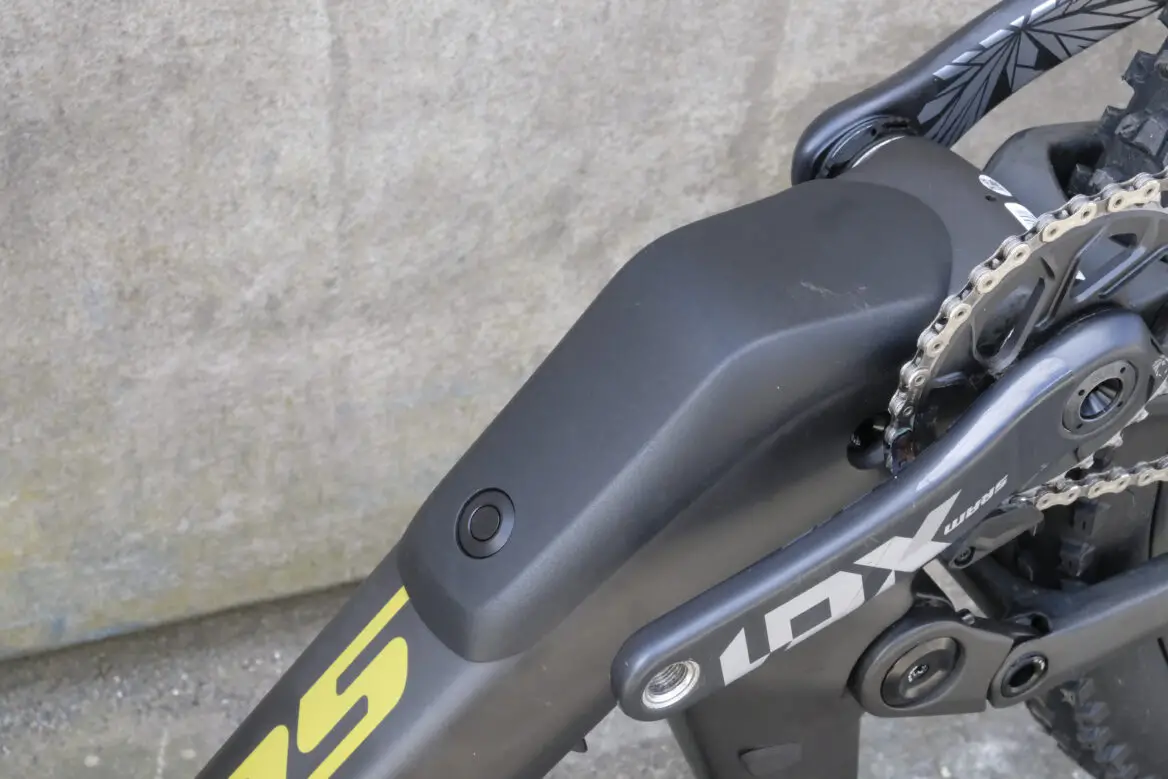
As it is I do actually think there are some benefits to containing the rear shock inside the frame. It protects the shock from filth and flying rocks. It makes the bike easier to clean (especially on this wireless AXS drivetrain Genius ST).
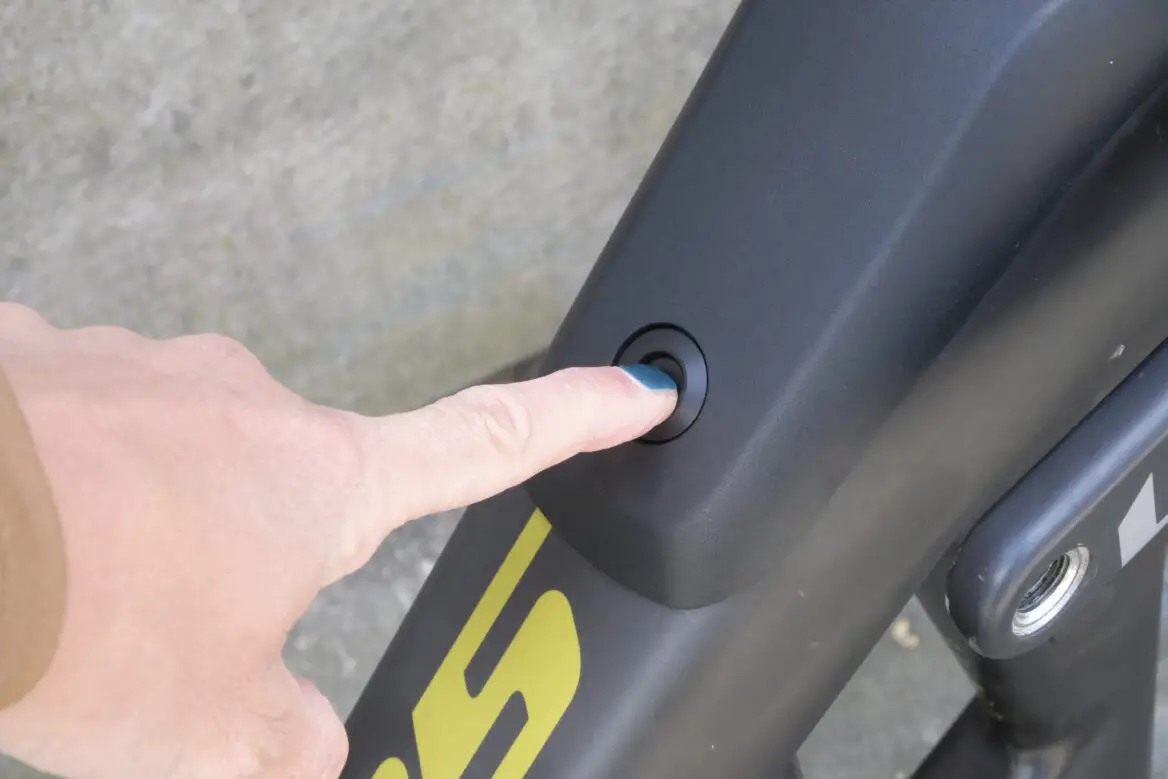
And without wishing to spoil the rest of this review, I think the location of the shock/pivots/rockers is key to the great performance of the Genius ST’s rear suspension. Without enveloping the shock inside the seat tube (nad having an interrupted seat tube instead) there would be issues with dropper insertion and generally having the shock right in the filthiest part of the bike. Specialized Enduro anyone?
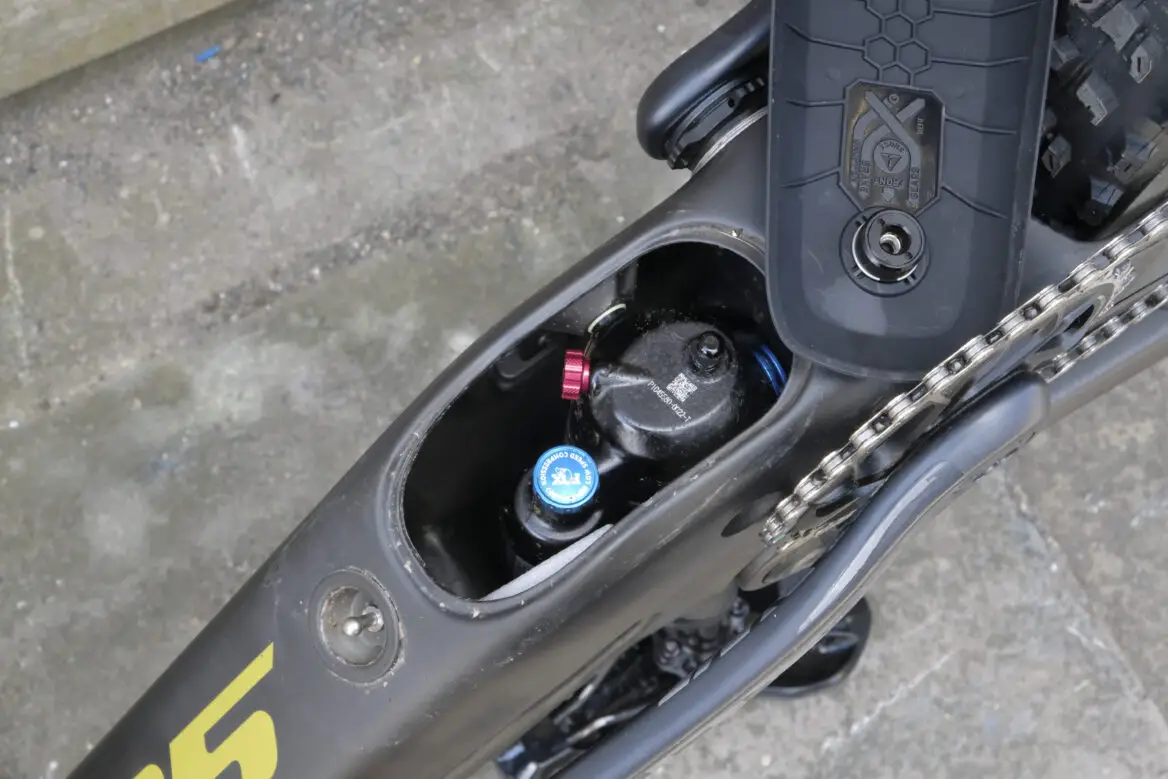
Hiding the shock does have a couple of drawbacks. Shock overheating and adjustment faff. The first one I personally think is irrelevant (in the UK at least). The extra faff of air pressure adjustment or damping adjustment is a trickier proposition. It totally depends how much of a knob twiddler you are. Sure, it’s faffy when you’re setting up the bike for the first couple of rides but it’s not that bad. The cover is really easy to remove/replace. And once you’ve got the bike set-up, chances are you’ll rarely open the cover much at all during your ownership of the bike.
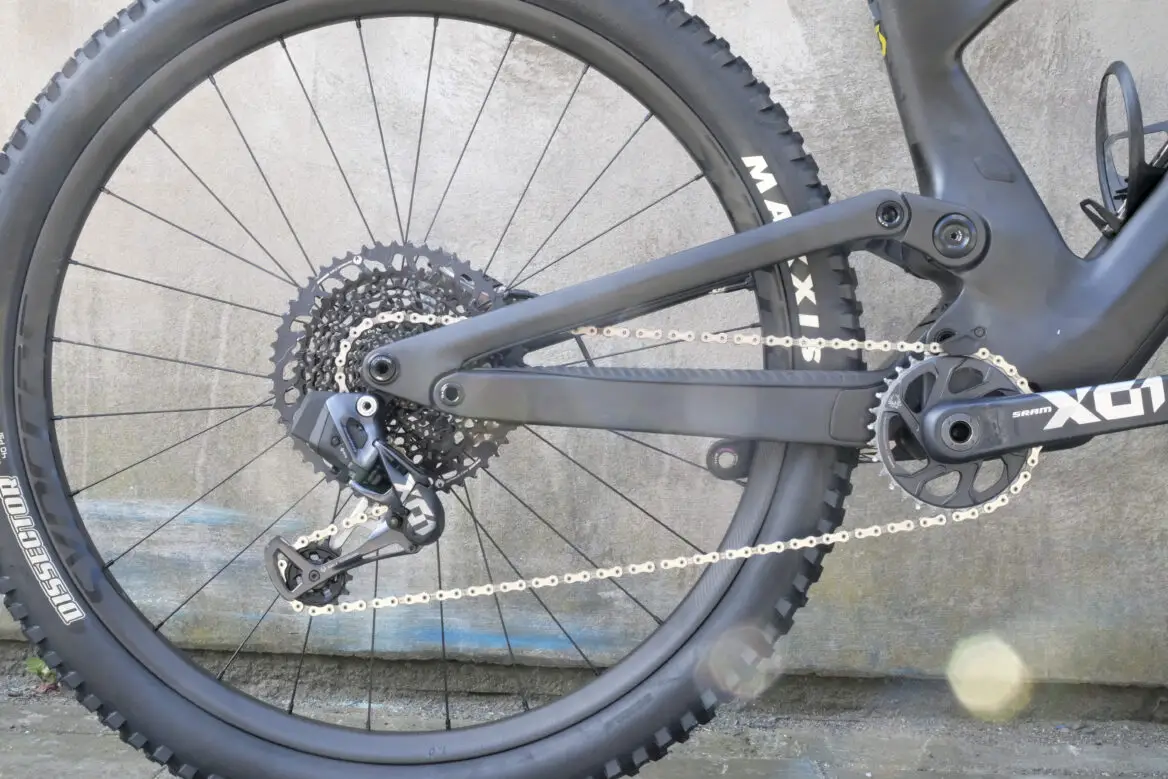
In terms of setting sag – and keeping an eye of general rear travel usage – the in-built travel-o-meter on the non-driveside main pivot is great. Certainly loads easier than mm tape-measuring O-rings on suspension shafts that don’t have gradients printed on them (ie. anything non-RockShox).
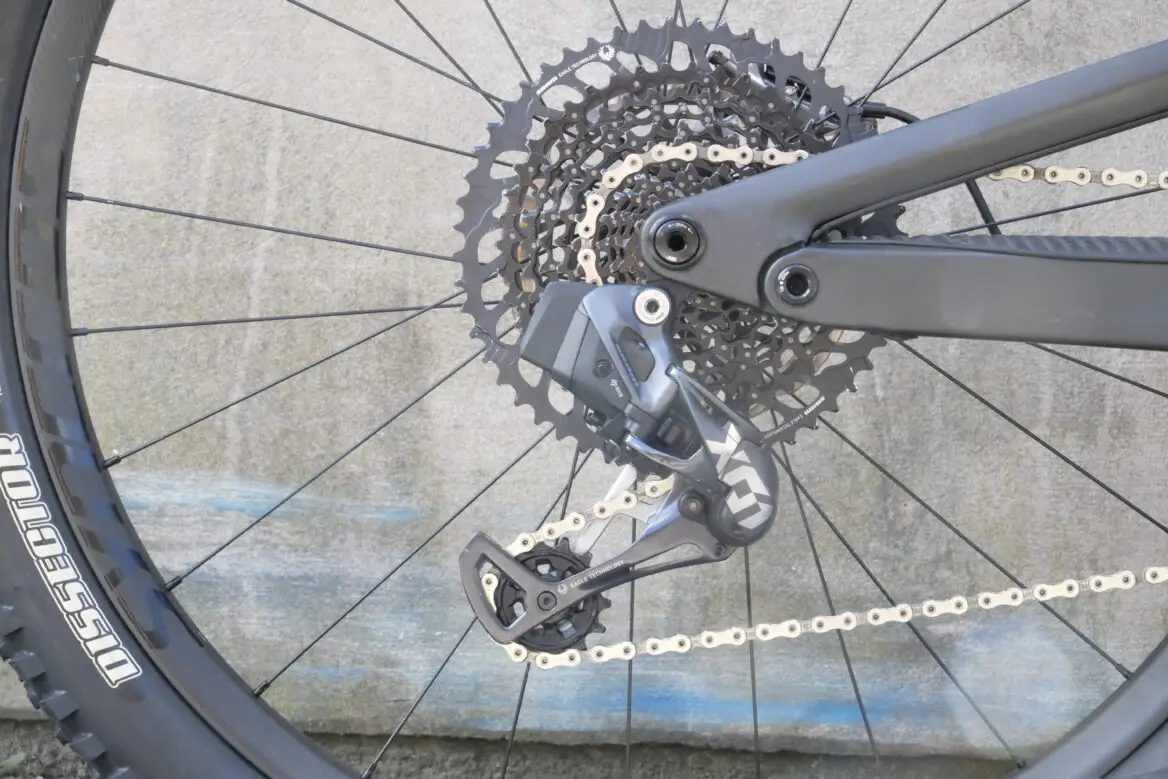
TracLoc and load
As regards the other proprietary/integrated/internal stuff. I’m going to cop out as just say “it is, what it is”. It’s not like any of it is a surprise to anyone who buys this bike. You can see right away all the ‘TracLoc’ control levers on the handlebars. And the routing going through the headset.
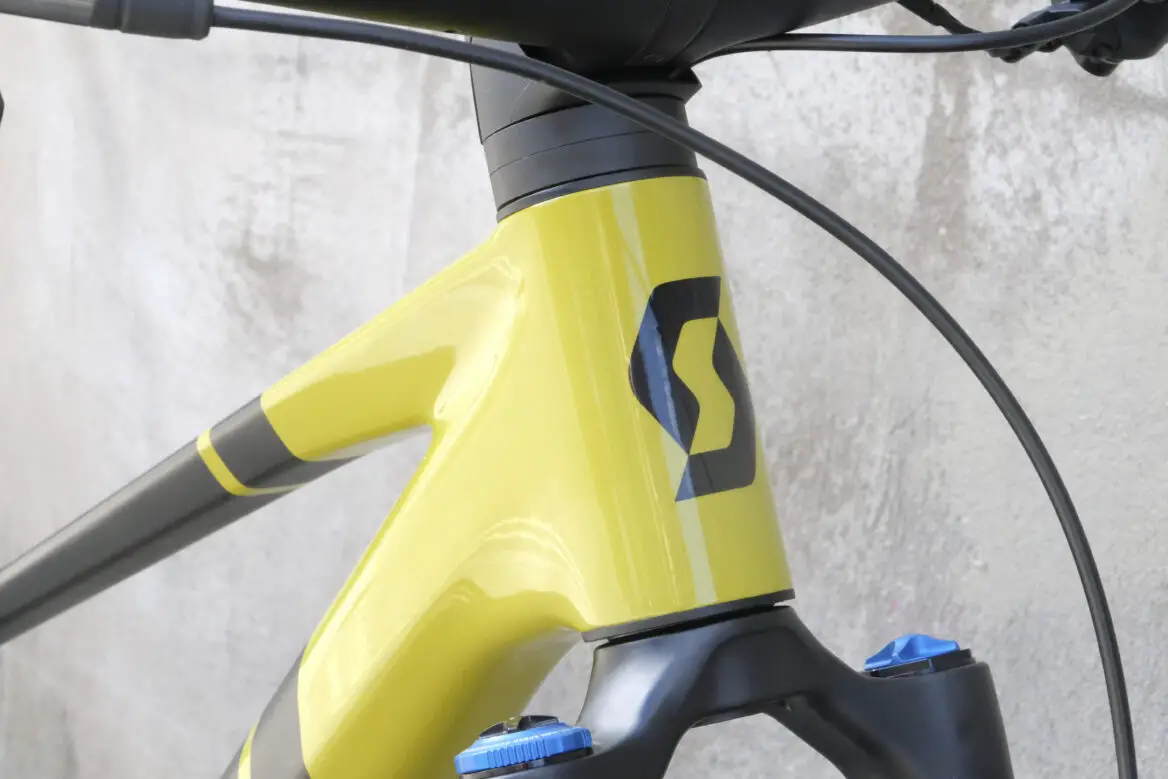
For what it’s worth, I surprisingly found myself having not problem at with the multi-lever TracLoc. But I do think that thru-headset cabling is wholly without virtue.
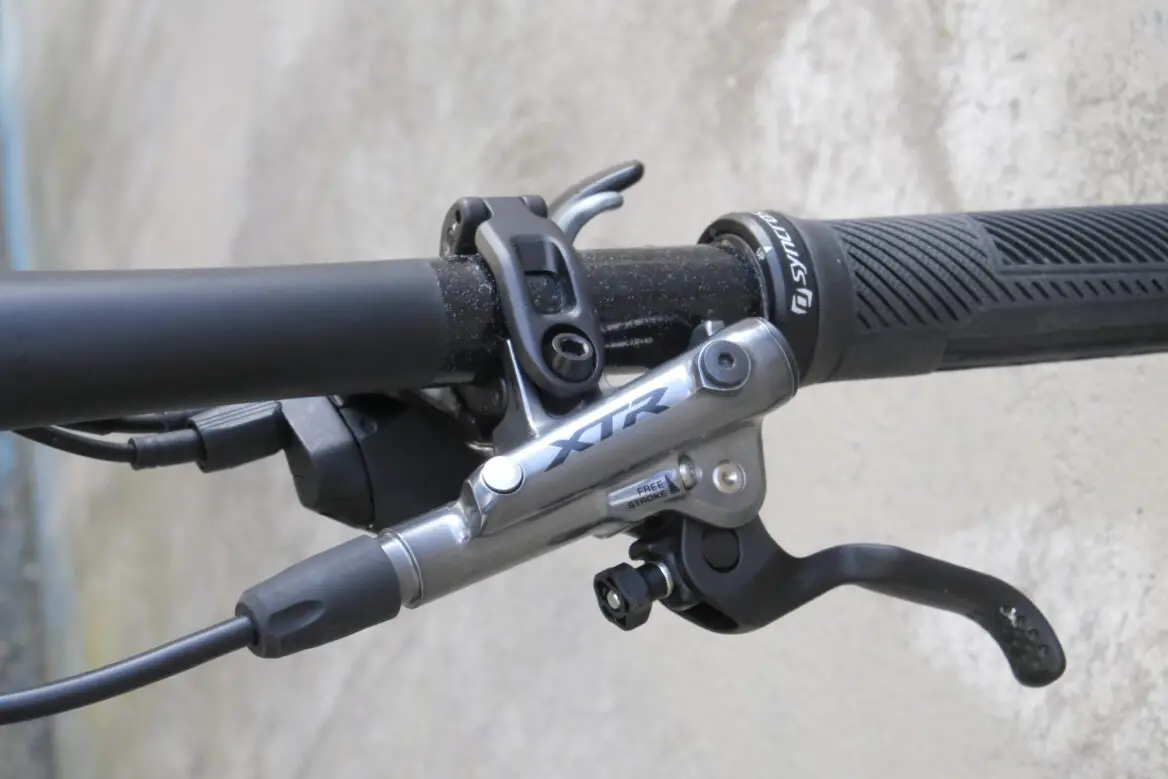
“TracLoc?” you ask. What is TracLoc? It’s the multi-lever thing on the left side of the handlebar that can switch the rear shock between three different settings. It does not do anything to the fork. The three different settings are called Open, Ramp Control and Climb.
The TracLoc control has three levers in total. The bottom one is the dropper post lever. The middle lever pulls the rear shock through the modes (Open > Ramp Control > Climb). The top lever releases the rear shock through the modes in the opposite order (Climb > Ramp Control > Open).
Climb closes the compression circuit to a virtual Lockout.
Ramp Control basically closes off a section of the air chamber and thus acts a bit like a volume spacer; ramping up the latter stage of travel use. This intended for dealing with hard landings and other such Big Events.
Open is, er.. open. It is worth pointing out that there is still Low Speed Compression (LSC) adjustment available on the rear shock. The compression damping isn’t just limited to the three TracLoc modes. So, Open more accurately puts the shock into whatever LSC setting you’ve dialled into it. Which could be loads of LSC.
Despite all the armchair teeth-suckers, I can say that somewhat surprisingly, I never once operated the dropper post lever instead of the TracLoc levers (or vice versa) by accident. It’s a very well designed control in my opinion. So there. I will say that when releasing the TracLoc into the next setting the released lever can give you a surprisingly firm rap on the index finger if you’re not careful. You do quickly adapt however and learn not to leave your finger in the firing line.
Now then. Perhaps the principal reason I didn’t have much of an issue with the whole TracLoc thang was that I didn’t find myself having much of a need to use it. I’ll come out and say that the Genius ST has the best 4-bar suspension performance I’ve ever experienced in terms of a trail bike. It is impressively stable under pedalling (even with minimal LSC) and has bags of mid-stroke support.
I dabbled a bit with the Ramp Control setting but whether it’s because I weigh 73kg and/or don’t really do much in the way of hucking, I didn’t really feel Open setting was overly linear. Your (air) mileage may vary. At least it is there if do find yourself flying through the travel too readily.
Ultimately, I rode in Open setting almost all the time (apart from engaging Climb setting in a placebo-stylee when bonking on tarmac or being late for the school run etc!)
Despite Scott no doubt wanting the TracLoc to be a vital USP of the Genius ST, if I owned a Genius ST I’d probably remove it and get a simple dropper lever to go in its place.
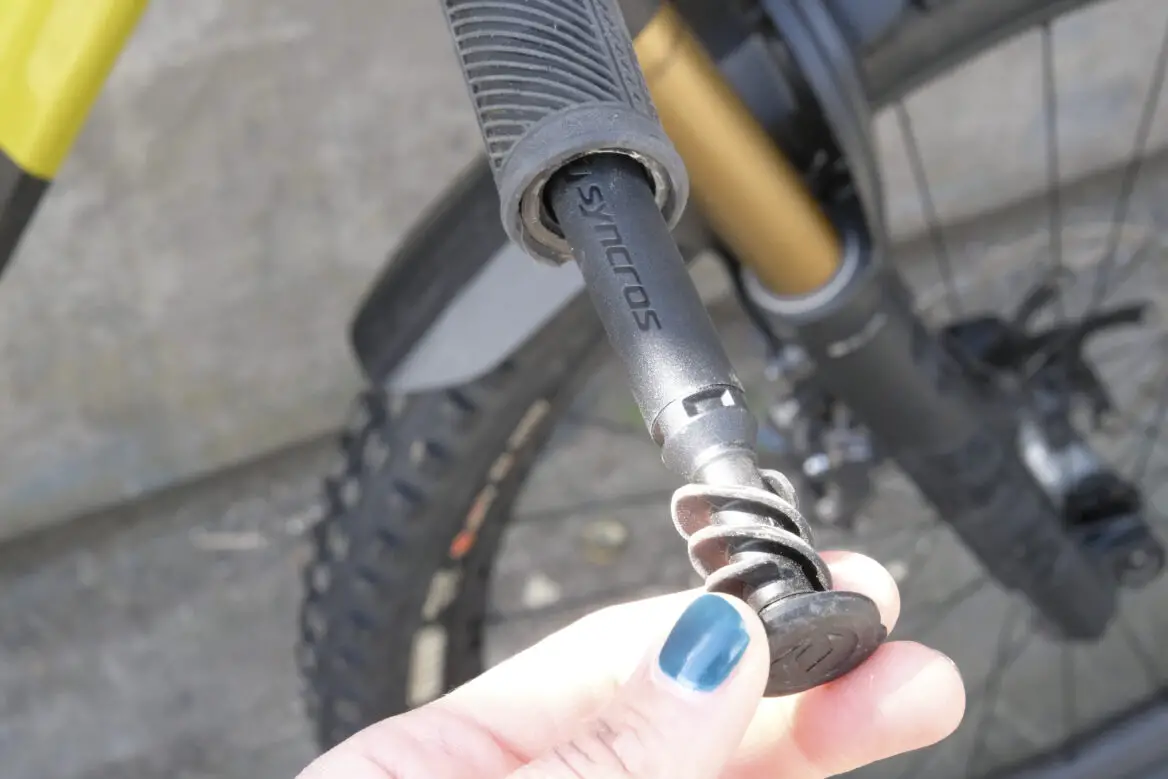
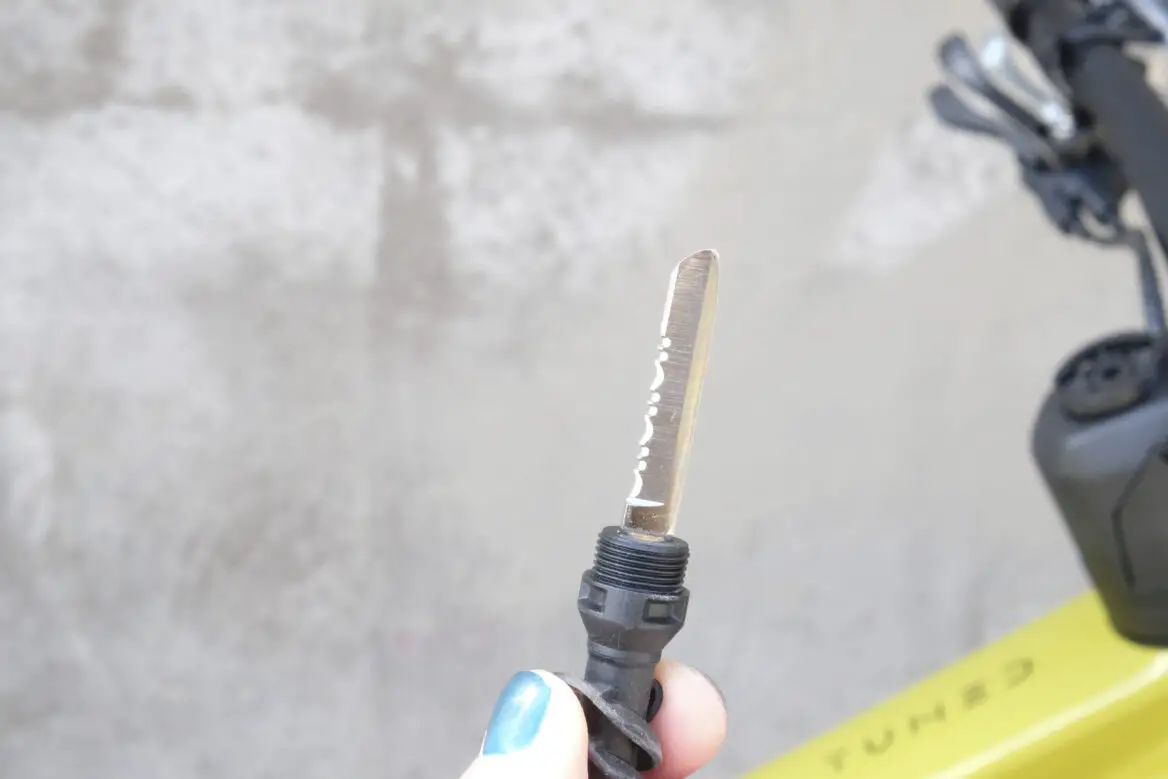
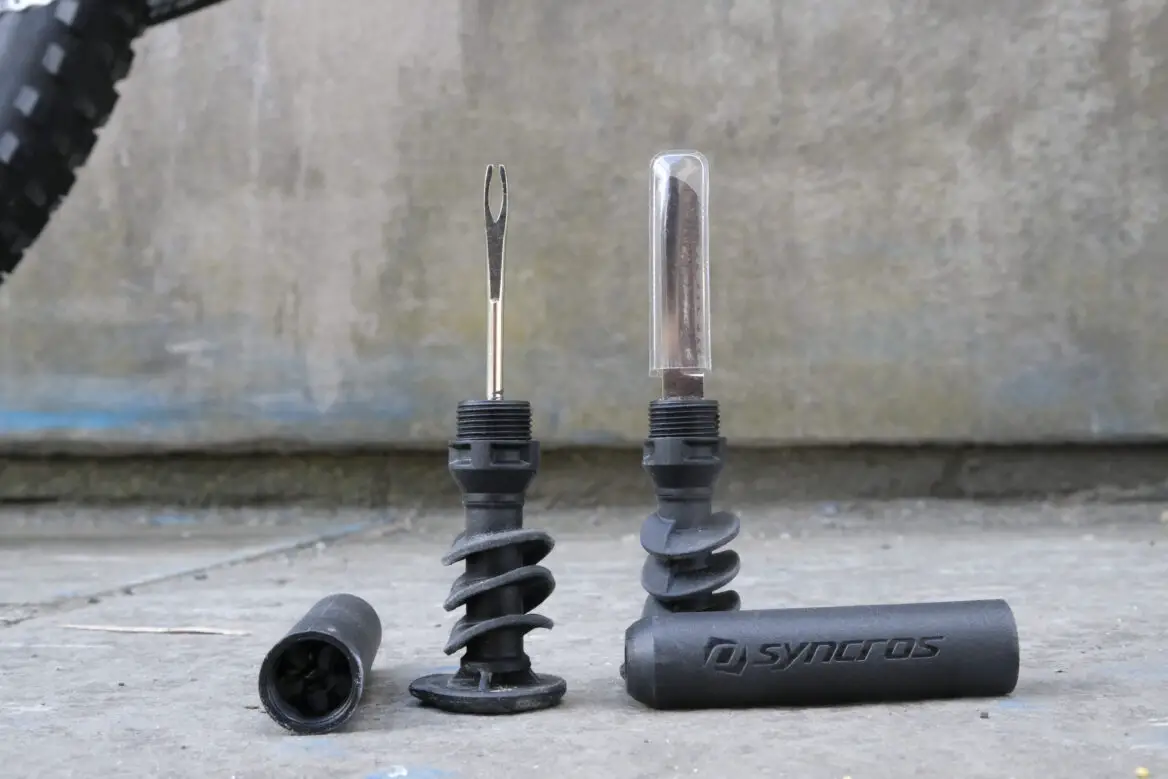
Numbers and parts
Another item I’d get rid of is the Syncros combined bar and stem thing. As well as feeling a bit on the harsh-stiff side, the bars are just too low for my tastes. And you can’t raise them. Nor easily swap-in another higher-rise handlebar. As luck would have it, I didn’t really mind the fixed roll/sweep of the bar but not everyone may be so fortunate. The stem length is okay (40mm) but for the entire test period I found myself longing for the ability to run a higher rise handlebar and a 30-35mm stem. The bike would have been sooo much better for it.
The overall geometry of the Genius ST is really good. The head angle is slack enough at 63.9°. The seat angle is a pleasingly, efficiently steep 77.2° that makes uphill progress a much more comfortable experience. The 485mm reach on this Large is pretty much par the course these days and certainly didn’t feel unduly short at all. The relatively short 440mm chain stays will have some super-modern eyebrows being raised and whilst I wouldn’t say no to some more mm being added, they were fine on the trail. The 440mm seat tube offers loads of standover (yay) but did highlight the rather meagre travel of the 170mm dropper post (boo). A 200mm dropper would fit no problem.
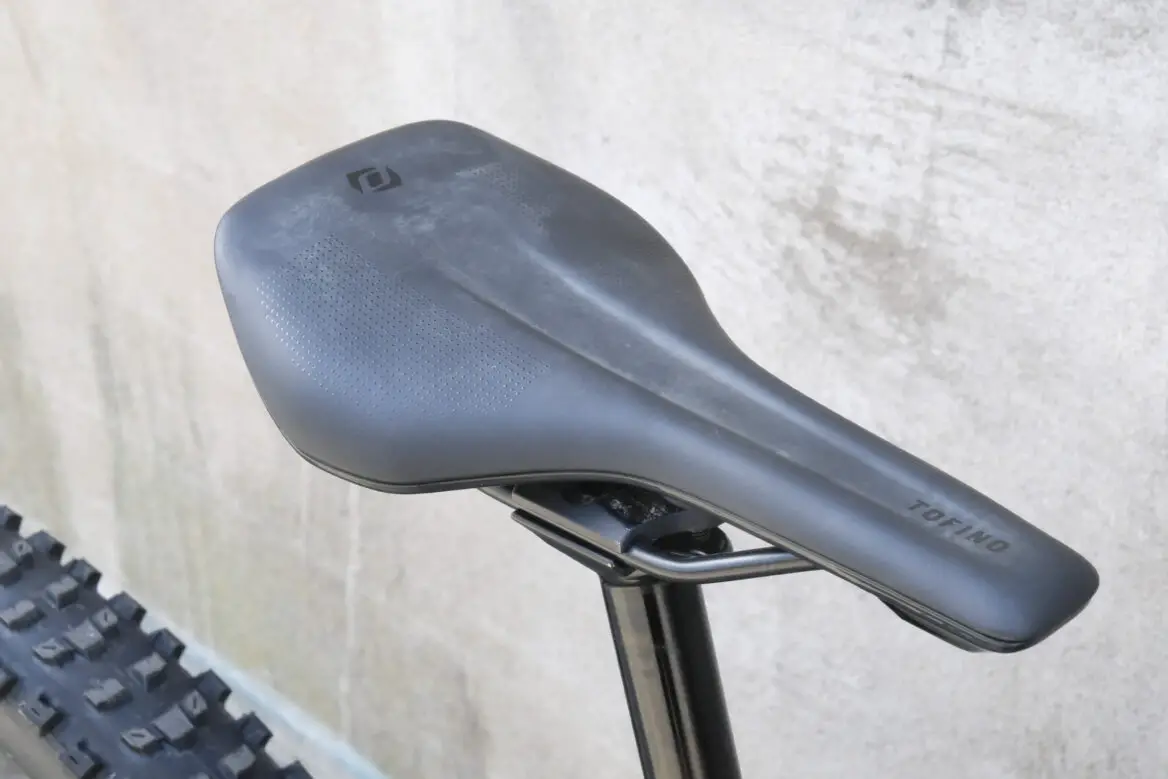
HMX and rubber
On to the elephant in the room. No, not the insane price tag. I’ve mentioned that already. The elephant in this particular room is made of carbon. The 900 Tuned Genius ST is made from Scott’s highest tier of carbon. They called it HMX. And I can confirm that not only does HMX build up into an impressively light trail bike, it is stiff. And I mean really stiff. Like, bonkers stiff.
It’s the chassis stiffness that makes this bike feel like a race bike rather than a trail bike. There is absolutely no give in it. Nor leeway. It’s a big part of why it feels/is a fast bicycle on certain terrain. The stiffness is also a big part in highlighting what is perhaps the Genius ST’s main flaw. Thankfully it’s ‘only’ the tyres.
2.6in thin-wall firm-compound tyres are not-great on any bike. On a bike that is very much a capable pseudo-race bike they are a downright liability. On the very first couple of rides out on the Genius ST it was the tyres that were the weakest link. No grip, no support. Just plenty of vague wibbling about. Sure, fast rolling on tarmac and fireroads. Good on the Instagram weigh scales. But really not-good on anything you’d call mountain biking.
I swapped them out for some 2.4in Maxxis DHR II tyres (MaxxGrip front, MaxxTerra rear) and things improved massively. Well worth the half a kilo weight penalty. With more suitable tyres installed the bike became genuinely brilliant. Still punchy and responsive but without the skittish unpredictability of before. With tyres as capable as the rest of the package, the Genius ST was a total PR machine.
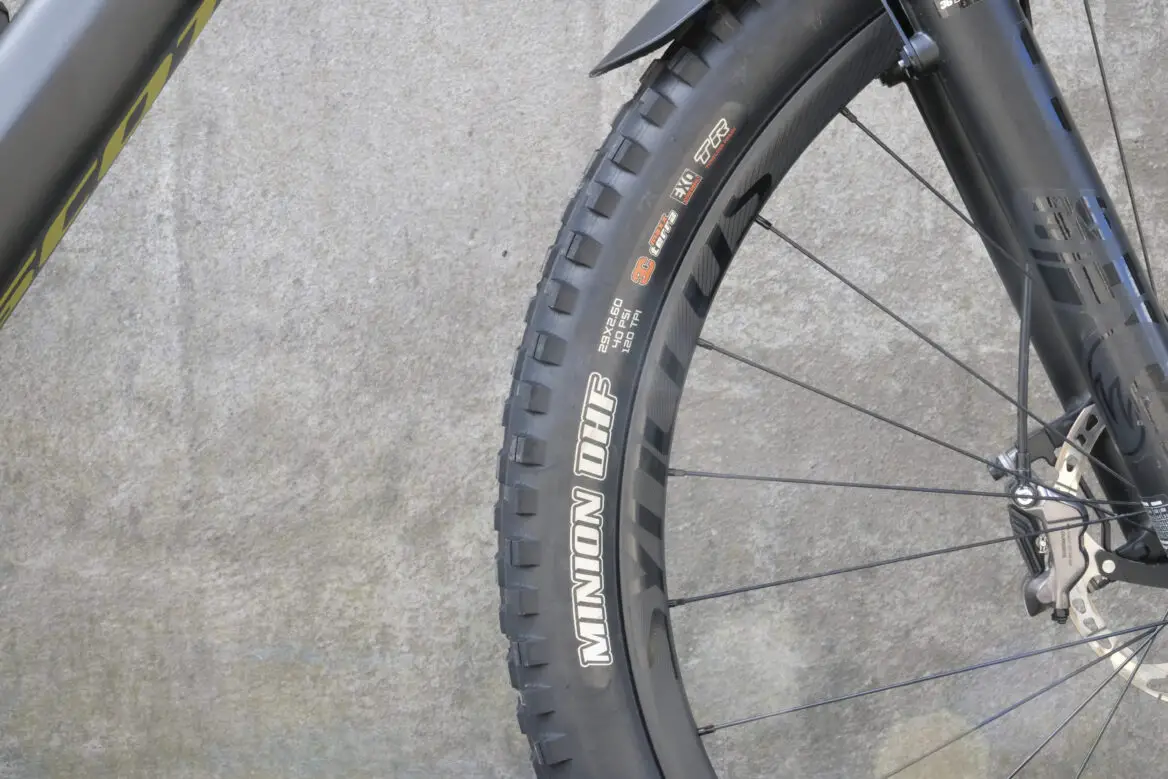
VFM?
As for the rest of the build kit, it’s all good stuff. Which of course it should be for £11k. XTR brakes were great. The SRAM AXS wireless drivetrain is always nice to have. The Fox suspension is class-leading. Exceptional. The stash tools and repair kit stuff (in the handlebars and bottle cage) were welcome additions.
A real highlight for me was the Syncros Revelstoke 1.0 wheelset. Some heavier and/or more aggro riders may differ but I had no issues with undue flex or anything. They were just really flipping fast. They were a huge part in the swiftness of this bike.
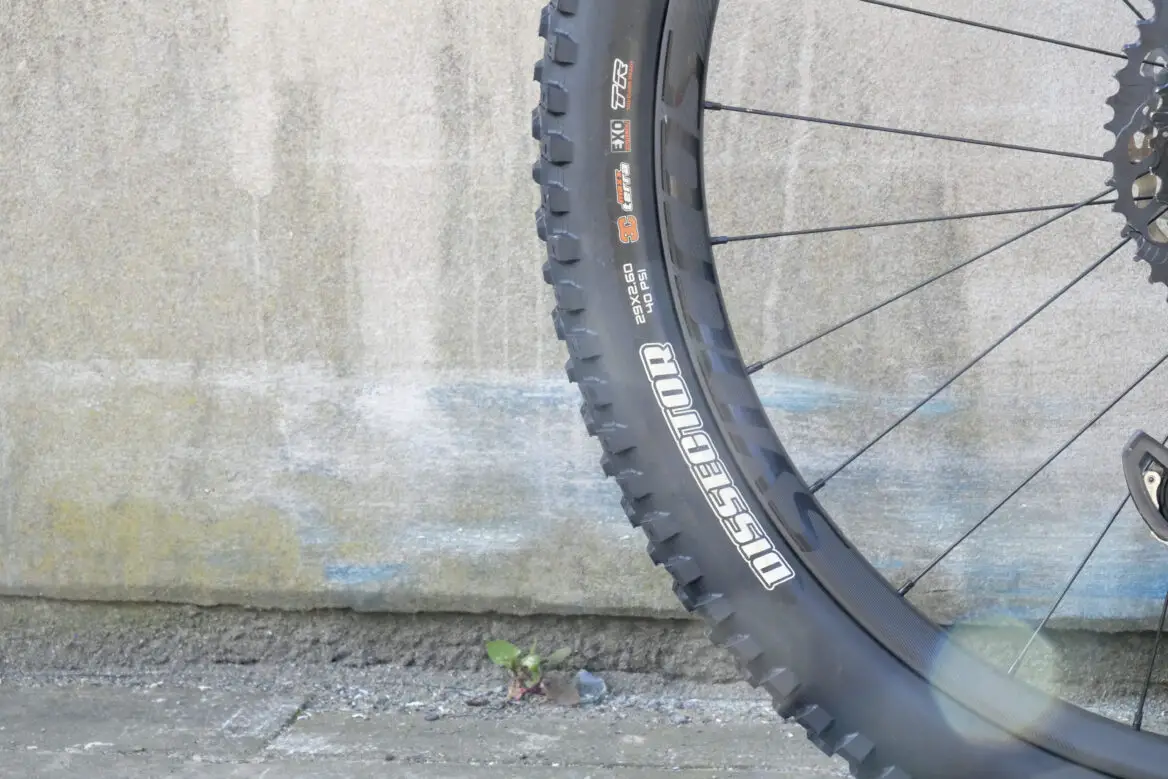
Oh, the Syncros grips were really nice too.
The Genius ST is very much a bike – like a lot of Scott bikes – that will be best appreciated by people who like to ride as hard as they can on their chosen terrain. And not just ride hard on certain areas. Ride hard uphill, alonghill and downhill. Everything, everywhere, all at once.

When riding – sorry, ragging – the Genius ST, it never felt it was the bike doing the stuff or taking over (or forgiving any mistakes for that matter). It rides like a weapon. Which can be a bit daunting if you yourself are riding like a tool. This really is an incredibly stiff and direct chassis. But when you’re ‘on it’, there’s not many bikes I can think of that could rival the excitement of the Genius ST. The suspension is excellent. It does everything whilst feeling like it’s doing nothing (in a good way!) The brakes are great. The drivetrain was flawless.
The Genius ST is like a racing bike without a race format to go with it. Actually, it’d do just fine on an Enduro race, despite the longer travel Super Enduro bikes we’re seeing these days. And, let’s be honest, there is always the ‘race’ of Strava.

Overall
The Scott Genius ST 900 Tuned was a genuinely amazing bike. Really sound geometry paired to a truly exceptional rear suspension performance. But this Genius ST is not without its flaws (the poor tyre choice and the restrictive cockpit). And any flaws at this price are arguably unforgivable. So don’t get this model. You can get the carbon (alloy back end) ST 910 for £7,499. Or the full alloy ST 920 for £4,999.
Scott Genius ST 900 Tuned specification
- Frame // Genius Carbon HMX, 150mm
- Shock // FOX FLOAT X Nude w/ TracLoc
- Fork // FOX 36 Float Factory Grip 2, 160mm
- Wheels // Syncros Revelstoke 1.0-30 CL
- Front Tyre // Maxxis Minion DHF, 120TPI TR EXO 3C MaxxTerra 29×2.6in
- Rear Tyre // Maxxis Dissector, 60TPI TR EXO 3C MaxxTerra 29×2.6in
- Chainset // SRAM X01 DUB Eagle Carbon, 32T
- Brakes // Shimano XTR M9120 4-pot, 203/180mm
- Drivetrain // SRAM X01 Eagle AXS, 10-52T
- Stem // Syncros Hixon iC Carbon
- Handlebars // Syncros Hixon iC Carbon, 780x25mm
- Grips // Syncros Endurance Lock-on
- Seat Post // Syncros Duncan Dropper Post 1.5, 170mm, 31.6mm
- Saddle // Syncros Tofino 1.5 Regular, Titanium rails
- Weight // 13.54kg (29.85lb)
Geometry of our size Large
- Head angle // 63.9°
- Effective seat angle // 77.2°
- Seat tube length // 440mm
- Head tube length // 120mm
- Chainstay // 440mm
- Wheelbase // 1,263 mm
- Effective top tube // 631.3mm
- BB height // 342.5mm (33mm BB drop)
- Reach // 485mm

More Reviews
Review Info
| Brand: | Scott |
| Product: | Genius ST 900 Tuned |
| From: | Scott Sports |
| Price: | £10,999 |
| Tested: | by Benji for 3 months |


You must be logged in to reply to this topic.